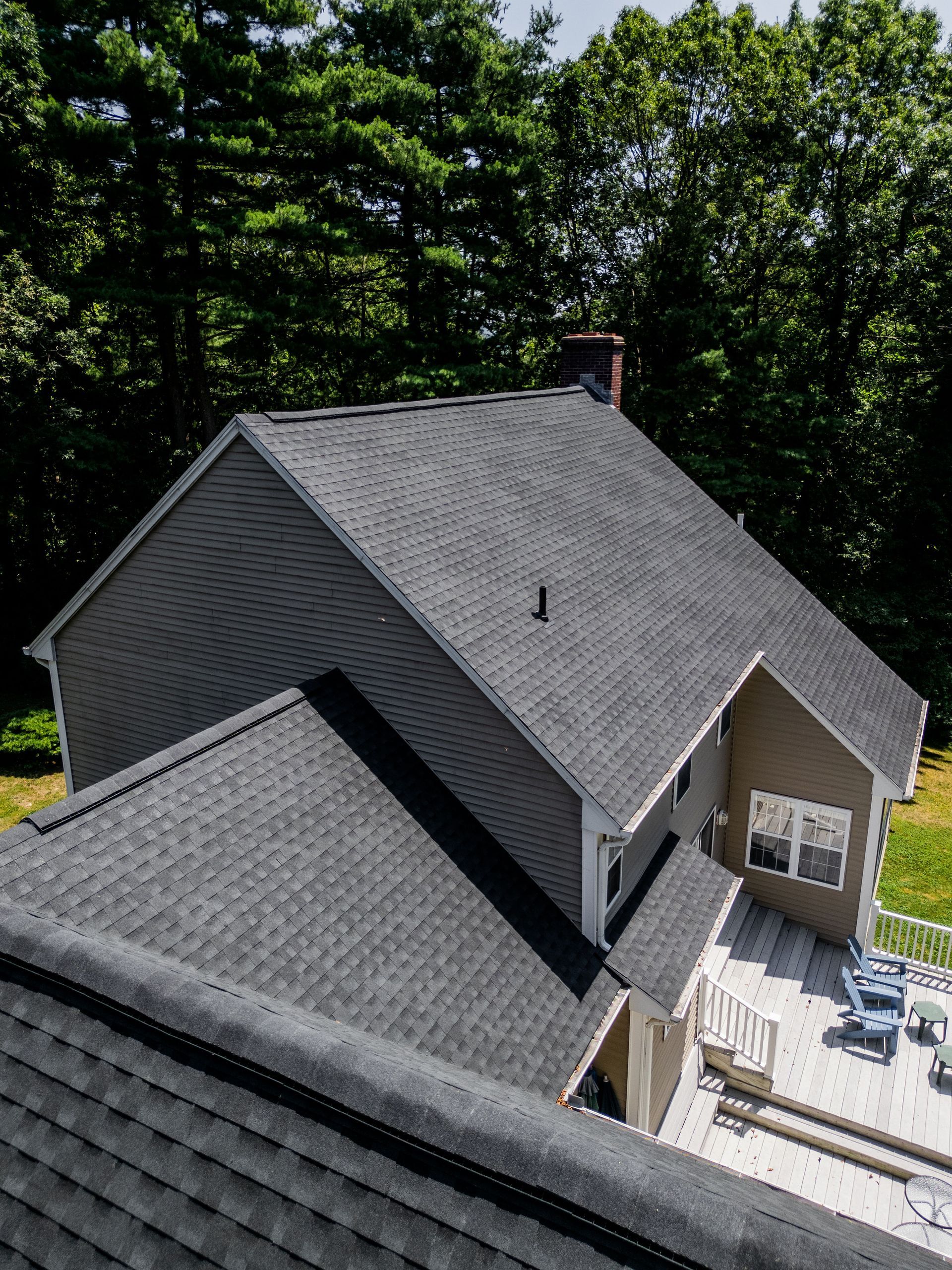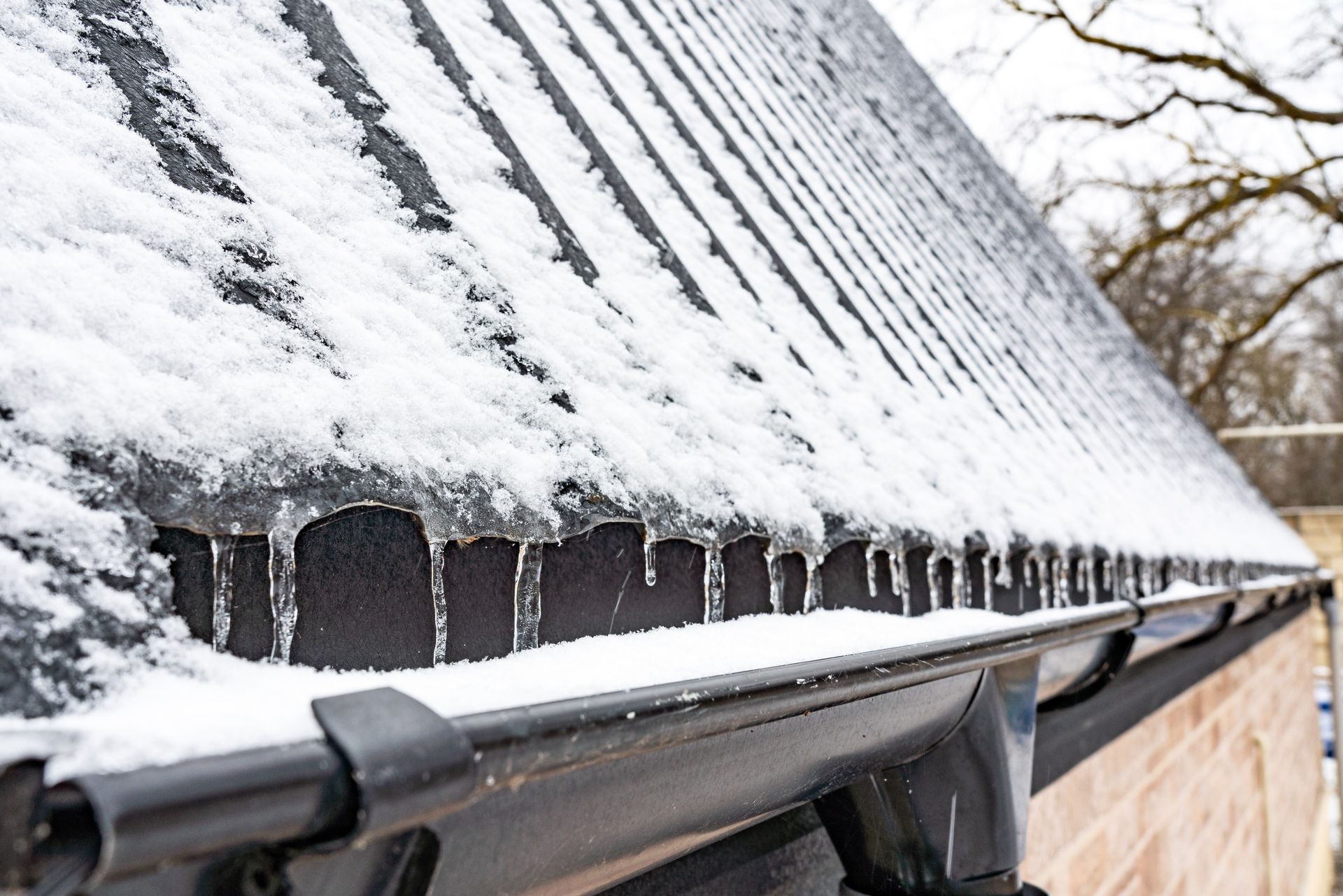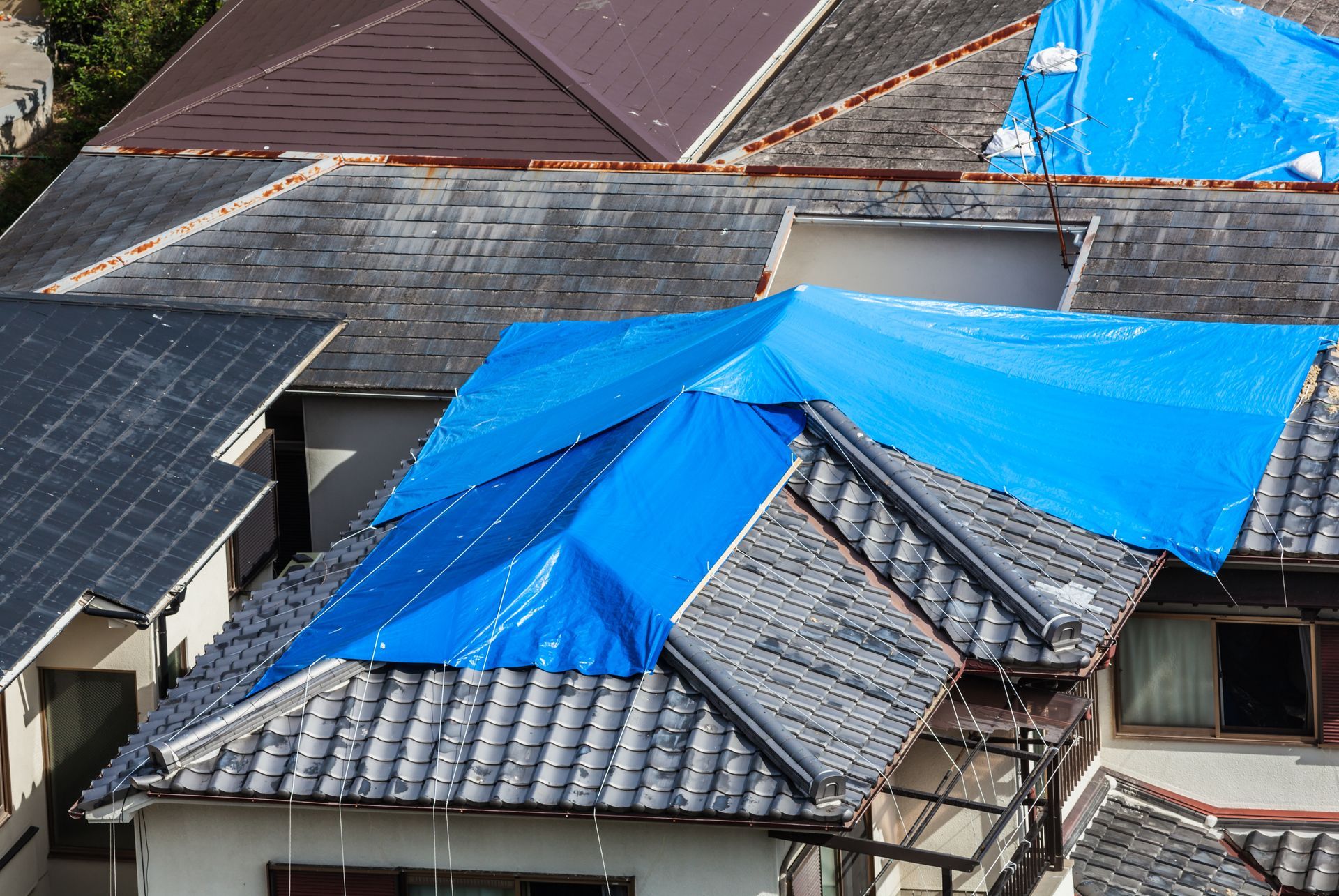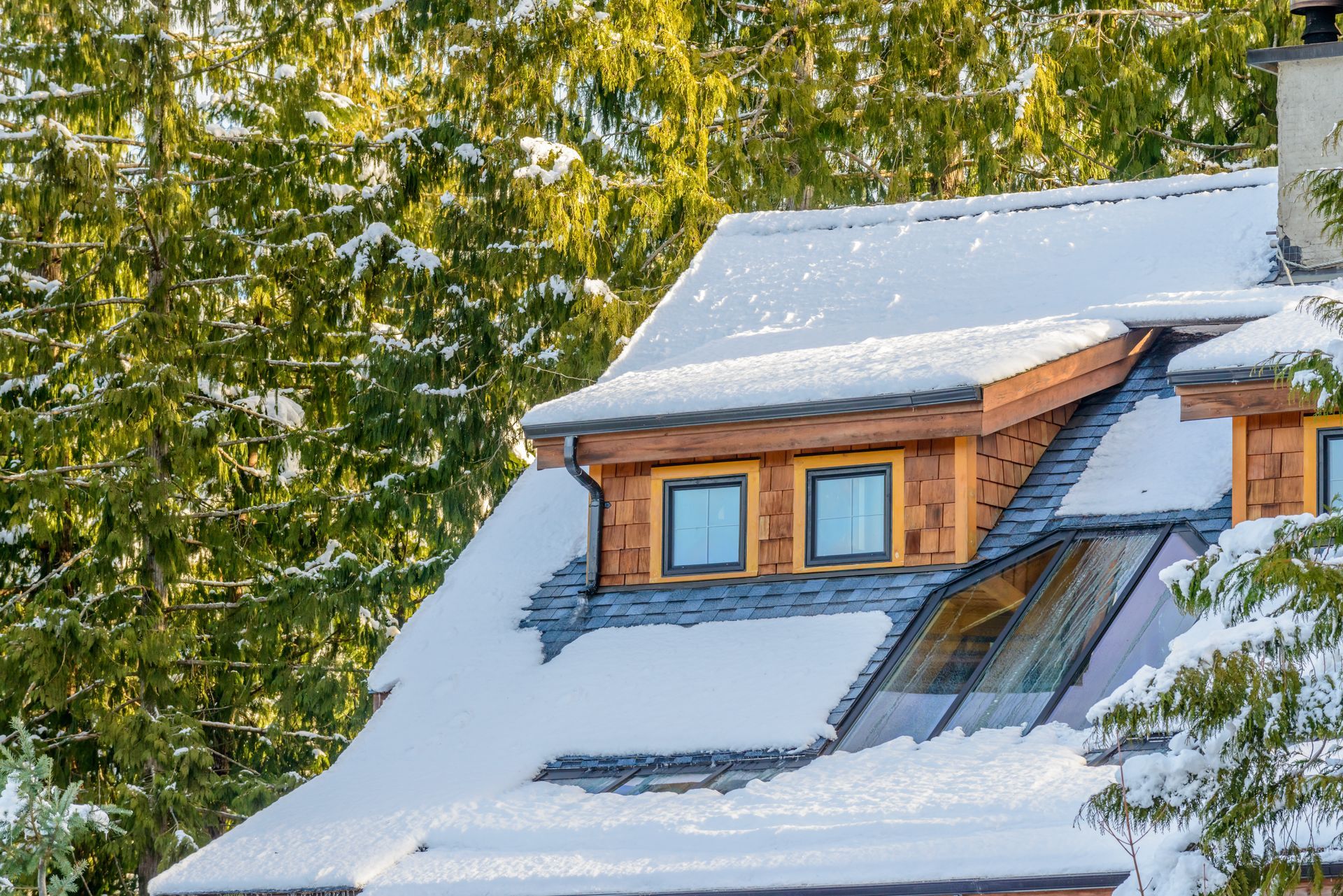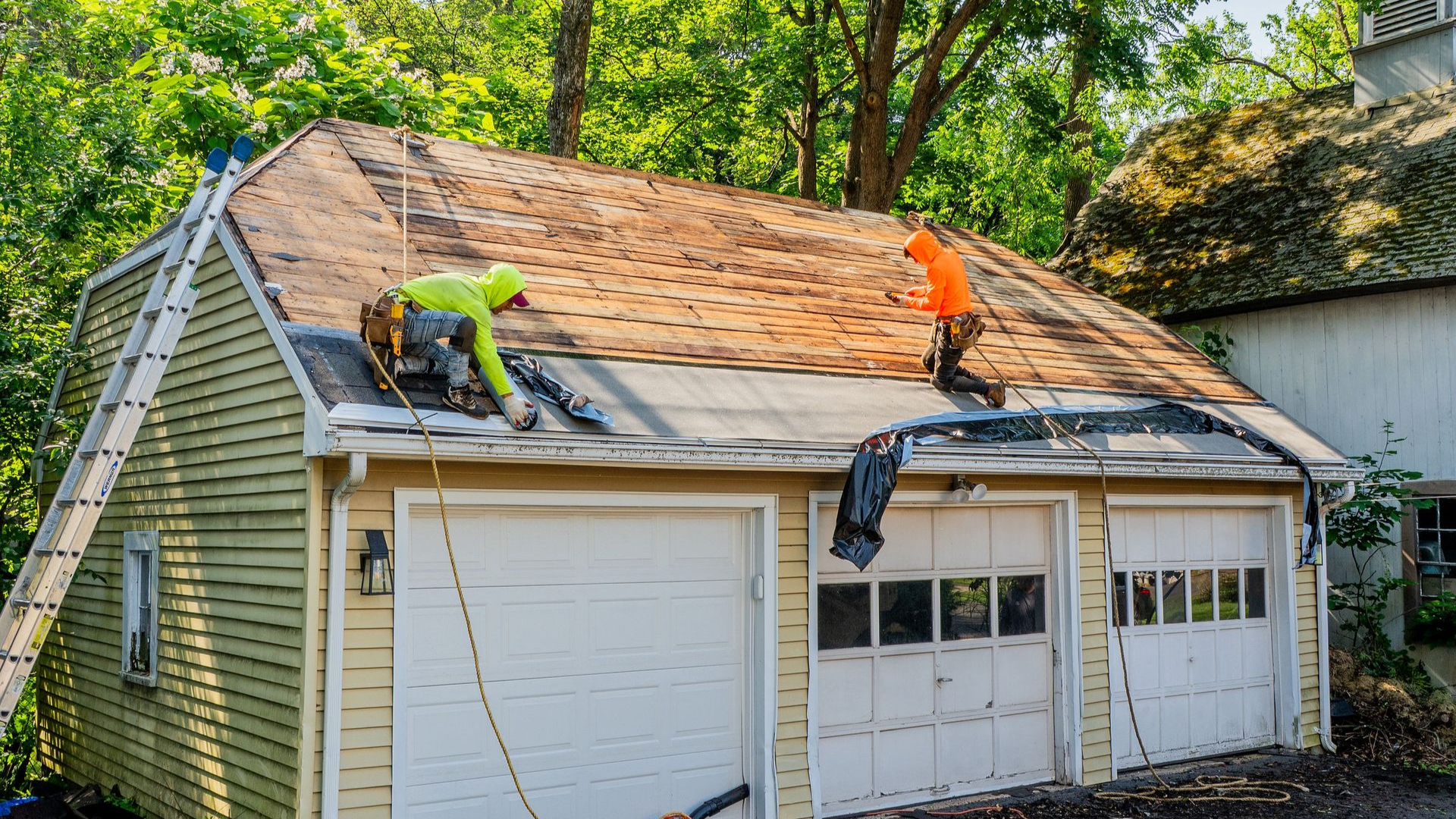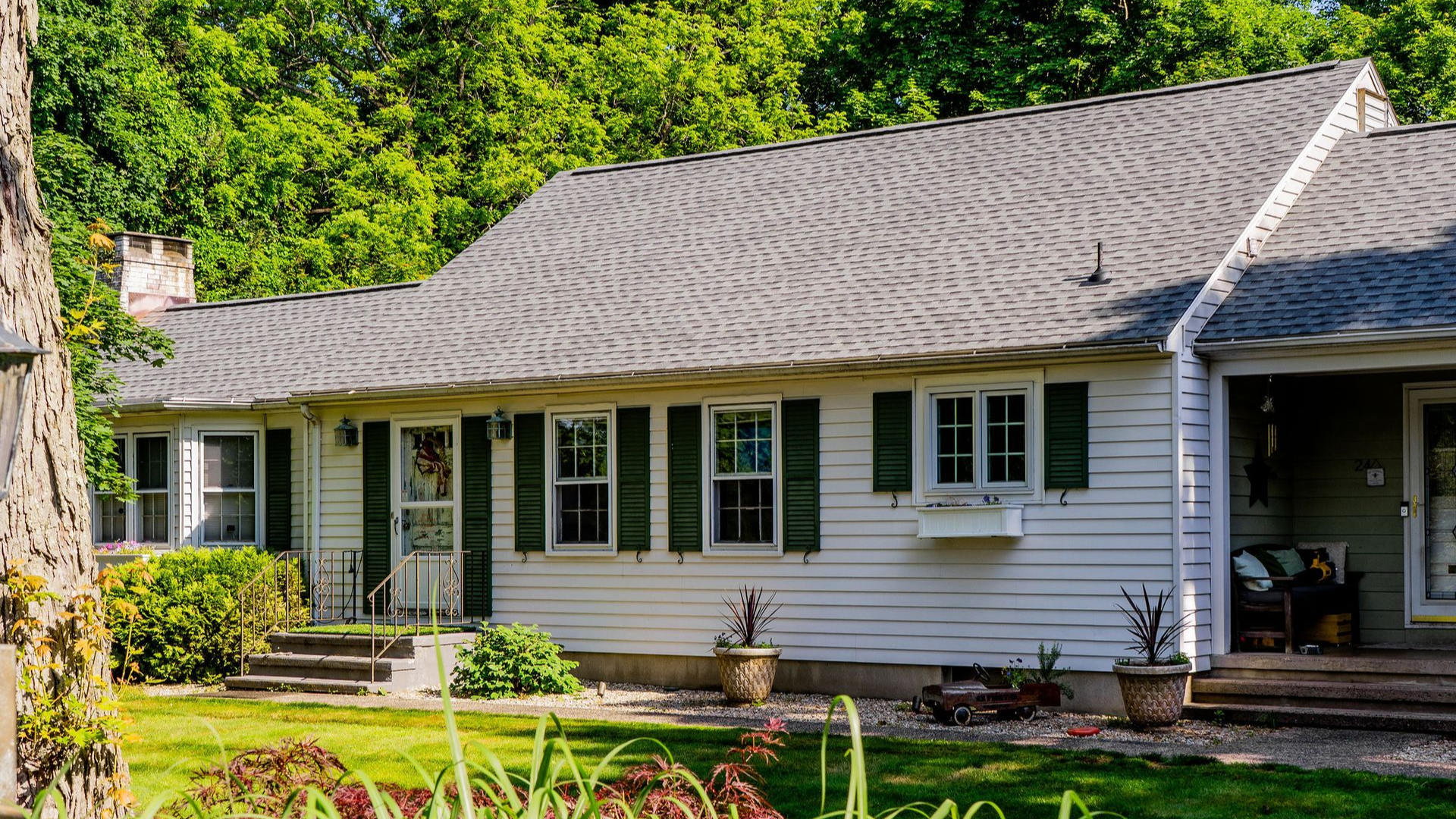Does a New Roof Qualify for the Energy Tax Credit in 2025?
September 25, 2025
Artisan Building & Remodeling is a licensed, insured roofing contractor serving Connecticut homeowners. Our project managers are factory-trained on energy-efficient roofing systems, and we follow current IRS and ENERGY STAR guidance so homeowners get accurate, up-to-date information. We are not tax professionals and always speak with a qualified tax advisor but we routinely help clients document roof projects that intersect with federal energy credits.
Quick Answer: When a New Roof May Qualify
Most new roofs do not qualify for a federal energy tax credit in 2025. The Energy Efficient Home Improvement Credit (Section 25C) covers doors, windows/skylights, insulation/air sealing, and certain high-efficiency HVAC/equipment not traditional roofing. However, the Residential Clean Energy Credit (Section 25D) may apply if your roof includes solar-generating components, such as roof-integrated solar shingles or tiles. Traditional shingles, metal roofing, roof decks, and ventilation do not qualify on their own.
Credits That Can Apply in 2025
Energy Efficient Home Improvement Credit (Section 25C)
- 30% credit on eligible improvements, with annual caps (generally up to $1,200 for most envelope items like windows/skylights and insulation; separate $2,000 cap for certain heat pumps/biomass). Roofing materials are not listed as eligible components.
Residential Clean Energy Credit (roof-mounted solar options)
- 30% credit for qualified clean energy property (e.g., solar electric).
Solar roofing shingles/tiles that generate electricity can qualify; traditional roofing that only serves a structural/roofing function does not.
Eligibility Checklist for Roof Projects
What “Qualifying” Means for Roofing Materials and Performance
- 25C: Applies to
windows/skylights,
exterior doors,
insulation/air sealing, and certain
high-efficiency equipment. Roofing materials are
not included as building-envelope components for this credit.
- 25D: Applies if the product
generates clean energy.
Solar shingles/tiles that both protect the home and produce electricity can qualify. Standard shingles (even reflective or “cool roof” shingles)
do not.
Primary Residence vs. Second Home Rules
- 25C (25C = energy efficient home improvement credit): Generally for your
primary residence in the U.S.; rental properties don’t qualify.
- 25D (residential clean energy): Can apply to a primary home and, in some cases, a second home you use part-time (not rented to others). Fuel cells have extra limits.
Installation Scope: Replacement vs. Repair
- Replacement or
repair of traditional roofing
doesn’t qualify by itself under federal credits.
- Roof-integrated solar installed as part of a roof project may qualify under
25D when it generates electricity and meets IRS guidelines.
Roofing Materials That Can Meet Credit Criteria
Metal Roofs with Reflective/Pigmented Coatings
Metal roofs can improve energy performance and comfort, but they don't qualify for the federal 25C credit in 2025. They may, however, help you reduce utility bills and might qualify for state, local, or utility rebates.
Asphalt Shingles with Solar-Reflective Granules
"Cool" asphalt shingles can lower heat gain in sunny climates, yet they are not eligible for 25C on the federal level. Check local programs for rebates separate from federal credits.
Cool Roof Membranes for Low-Slope Areas
Cool roof membranes can cut cooling loads on low-slope sections, but they are not an eligible 25C component. Again, local incentive programs may exist.
Roof-Integrated Solar Shingles/Tiles (Clean Energy Credit)
Solar shingles/tiles that produce electricity may qualify for the 25D Residential Clean Energy Credit at 30% of eligible costs. Traditional shingles or structural elements that only support panels do not.
What Typically Doesn’t Qualify
Structural-Only Replacements, Routine Repairs, Ventilation, Decking, and Gutters
If a component serves only a roofing/structural function (decking, rafters, underlayment, standard shingles/tiles, vents, gutters), it doesn’t qualify for federal credits.
How Much You Can Claim in 2025
Credit Rates, Category Caps, and Annual Limits
- 25C: 30% of eligible costs
up to $1,200 per year for most building-envelope items (e.g., windows/skylights up to
$600 total, doors up to
$500 total), and up to
$2,000 for specific high-efficiency equipment (e.g., certain heat pumps). Roofing itself isn’t covered.
- 25D: 30% of qualified clean energy property (e.g., solar). No annual/lifetime dollar cap (except fuel cells), and unused credit can carry forward. Roof-integrated solar shingles/tiles count when they generate electricity.
Stacking with State, Local, and Utility Rebates
Federal credits may require you to subtract certain rebates/subsidies from project cost when calculating the credit. Utility rebates that reduce purchase price are typically subtracted; net-metering bill credits for energy you sell back usually are not. Always review program terms with your tax pro.
Documentation You’ll Need to Prove Eligibility
Manufacturer’s Certification Statement & Product Ratings
For 25C items (like windows/skylights and insulation), keep the manufacturer’s certification and ensure products meet required standards (e.g., ENERGY STAR Most Efficient for windows/skylights). Starting in 2025, 25C items must come from a Qualified Manufacturer and include a Qualified Manufacturer Identification Number (QMID) on your tax return.
Itemized Roofing Contract/Invoice
Ask your contractor to itemize the project, separating non-credit roofing work from any eligible items (e.g., skylights, insulation/air sealing) or roof-integrated solar equipment and labor. File where appropriate.
IRS Form 5695 and Recordkeeping
You’ll claim Form 5695 with your tax return. Part II covers 25C (home improvements/equipment). Part I covers 25D (clean energy). Keep contracts, product model numbers, invoices, and certifications with your records.
Cost–Benefit Examples
Cool-Roof Upgrade vs. Standard Shingle Replacement
If you choose a cool-rated shingle instead of a standard shingle for comfort and lower cooling costs, that decision may save energy but won’t generate a federal 25C credit. You might still access local rebates or utility incentives. The long-term value is in energy savings and better roof performance rather than a federal tax break.
Metal Roof Plus Solar PV Scenario
Pairing a durable metal roof with roof-integrated solar shingles/tiles (or conventional solar panels) can qualify the solar portion for 25D at 30%. The roofing materials themselves aren’t credit-eligible, but designing both together can simplify penetrations and wiring and may maximize roof lifespan under the array.
Project Timing and Planning
“Placed in Service” Date, Permits, and Inspections
You claim the credit for the tax year the property is installed (placed in service), not when it’s purchased. Be mindful of permitting timelines and inspections so your installation date falls in the intended tax year.
Lead Times and Seasonal Considerations
High-demand products (windows, skylights, solar equipment) can have long lead times, especially during peak seasons. Plan early if you want your project completed within the calendar year.
How to Choose a Qualified Roofing Contractor
Questions to Ask About Product Eligibility and Warranties
- Will any part of my project (e.g.,
skylights,
insulation/air sealing,
solar shingles/tiles) be
eligible under 25C or 25D?
- Can you
itemize the proposal to separate credit-eligible items from base roofing work?
- What manufacturer certifications and warranty terms apply?
Proof of Compliance and Post-Install Documentation
Request product spec sheets, certification statements, QMID (for 25C items in 2025) when relevant, and a final paid invoice showing equipment and labor breakdowns.
How to Claim the Credit: Step-by-Step
Confirm Eligibility, Keep Docs, File Form 5695
- Confirm eligibility (25C vs. 25D) before you order materials.
- Save documentation: contracts, model numbers, certifications, and QMID where required.
- File IRS Form 5695 with your tax return for the year the improvement was
installed. Coordinate with your tax professional.
Key Takeaways for Homeowners in 2025
- A standard
new roof metal or asphalt
does not qualify for a
federal energy tax credit.
- Exceptions:
Solar-generating roofing (solar shingles/tiles) may qualify under
25D, and
skylights/insulation may qualify under
25C.
- Annual limits apply to
25C (e.g., windows/skylights, doors, insulation), while
25D is
30% with
no annual cap (fuel cells excepted).
- In
2025,
25C items must come from
Qualified Manufacturers and include a
QMID on your return.
- Always confirm specifics with your
tax advisor and check
state/utility rebates to stack benefits.
IRS+2IRS+2
Get Expert Help
Schedule a consultation with
our roofing team to discuss your goals, budget, and whether skylights, insulation/air sealing, or roof-integrated solar make sense for your home. We'll design a roof system for long-term performance and provide the documentation your tax professional needs.
Frequently Asked Question's
Do asphalt shingles qualify for energy tax credits?
Standard asphalt shingles do not qualify for federal energy tax credits in 2025, even if they have reflective properties or are labeled as "cool roof" products. Only roof-integrated solar shingles that generate electricity may qualify under the 25D credit.
Can I claim a tax credit for replacing my old roof with a metal roof?
No, replacing a roof with a metal roof does not qualify for federal energy tax credits, regardless of the metal roof's energy efficiency or reflective coatings. However, metal roofs may help reduce utility bills and could qualify for local or utility rebates.
What if I add solar panels to my new roof - does that change anything?
Yes, if you install roof-integrated solar shingles or conventional solar panels as part of your roofing project, the solar portion may qualify for the 25D Residential Clean Energy Credit at 30%. The roofing materials themselves still don't qualify, but you can claim the credit for the solar components.
Do skylights installed during a roof replacement qualify for tax credits?
Skylights may qualify for the 25C Energy Efficient Home Improvement Credit if they meet ENERGY STAR Most Efficient requirements and come from a Qualified Manufacturer with a QMID. The credit covers up to 30% of costs with annual caps.
What documentation do I need to keep for tax credit claims?
Keep detailed records including itemized contracts, product model numbers, manufacturer certifications, QMID numbers (for 25C items), and final paid invoices. Your contractor should separate credit-eligible items from standard roofing work in the documentation.


